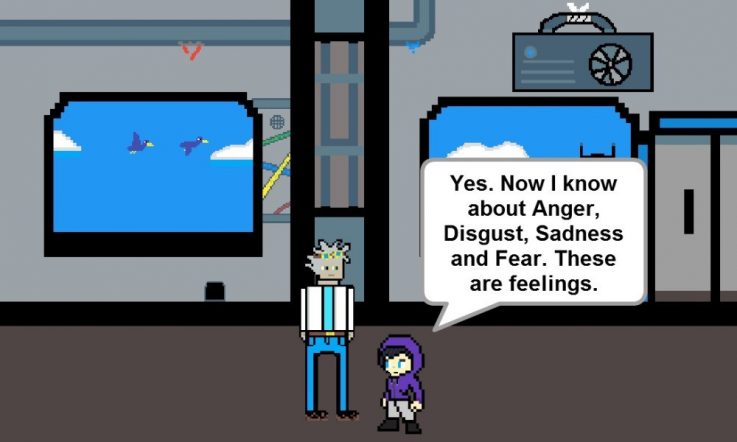In the first of two articles, Marc Barrett explores the work of Alain Bergala on the potential of short film clips to engage school students in learning across the curriculum.
The best teaching and learning happens when we engage our students on an intellectual, emotional and personal level. That is all well and good to acknowledge but our ongoing quandary, as teachers, has always been – how do we do that?
Back in 2002, an established and well-respected film academic in France, called Alain Bergala, wrote an incendiary book called The Cinema Hypothesis. Amongst other things, it aimed to solve the problem of how to engage students in their learning. His ideas received strong support in France, but until recently have been mostly contained within the educational circles of his home country.
That is, until an English translation of his book was made available in 2016, and Bergala's central idea, of using film as the basis of a new kind of educational paradigm, spread like wildfire in the United Kingdom and Europe. Now, academics throughout Europe are debating how to give practical form to Bergala's ideas.
His basic thesis was that film could be used in all educational domains, to engage the mind and emotions of students and inspire curiosity. His ideas were loosely based on a French concept known as ‘cinephelia' – a kind of deep, artistic appreciation for the power of cinema; one that acknowledges film as having a unique ability to engage the mind and emotions of viewers.
Incorporating cinema into classroom practice
In Australia, Bergala's book is not likely to result in our various curriculum and syllabus documents being tossed aside in favour of a film-centric curriculum, but we can take a few key points from his book and look at ways to incorporate the use of cinema into our classroom practice, with the aim of developing more deeply engaged students.
It is crucial to acknowledge that not all moving images are created equal. In France, there has been a long tradition of ‘cinema' as a distinct form of expression to other forms of moving image, such as television or online instructional videos.
Cinema, as Bergala would insist, is the visual form of moving pictures that is most closely associated with personal, artistic expression. Unlike a YouTube video, which may simply be about displaying some random action, cinema will employ filmic techniques, such as camera angles, sound, scripting and performance, to generate emotional reactions and engage its audience.
For those not immersed in film studies, the distinction may be difficult to determine. But, put simply, examples of cinematic expression will show obvious signs of thought and reflection in their execution – they will be about how things are shown on screen, not just about what is shown.
For our purposes, this is an important distinction. To meet our aims of using film to generate intellectual and emotional engagement, the films we show must invoke the emotions, they must stir us and insist on a response from us.
Bergala suggested that teachers can utilise this enormous power of cinematic film to engage students in any learning domain. He also said that its power should not be confined to a single, longer session, in which students sit, en masse, to watch an entire film over a couple of hours; a practice that tends to disconnect students with short attention spans, and one whose positive impacts fade rapidly. But rather, that this kind of cinematic engagement should occur regularly, over many sessions, delivered in small, self-contained ‘clips'.
Curating film clips for the classroom
Each clip needs to include a question or problem and some indication of the stakes at risk for key characters in order for emotional engagement to occur. The clips don't need to include the resolution of the problem. In fact, for the purpose of engaging the mind, it may be best for the resolution of the problem to be withheld from your students, until after the learning has been achieved, as a kind of reward. In this way, a lesson could begin and end with a short excerpt or clip.
The clips you show can be excerpts from long or short films, live action or animated, narrative or documentary, famous or otherwise. The source of the clip is not as relevant as whether it engages your students in the topic of your choosing.
Of course, declaring ‘let's use film clips in the classroom!' is very easily said. The difficulty for any teaching team considering the use of film clips in the classroom quickly becomes, ‘how do we find the right clips?' It may require a sizeable amount of research or some considerable prior knowledge of film and film history (and copyright requirements), to navigate all the cinematic content of the world for your students' needs.
Good curatorship is key for Bergala's ideas to be practical in a school setting.
Stay tuned: In tomorrow's article, Marc Barrett will be discussing clip selection, some of the resources available for teachers, and looking for artistic stimulus beyond film.
References
Bergala, A. (2016). The Cinema Hypothesis: Teaching cinema in the classroom and beyond. (FilmmuseumSynemaPublikationen 28). Trans. Whittle, M. Vienna: Austrian Film Museum.
Think back to a time when you’ve shown a film to your students.
What were the reasons behind your choice of material? What did you hope to achieve?
Make a list of the pros and cons of longer films versus short clips shown more often.



